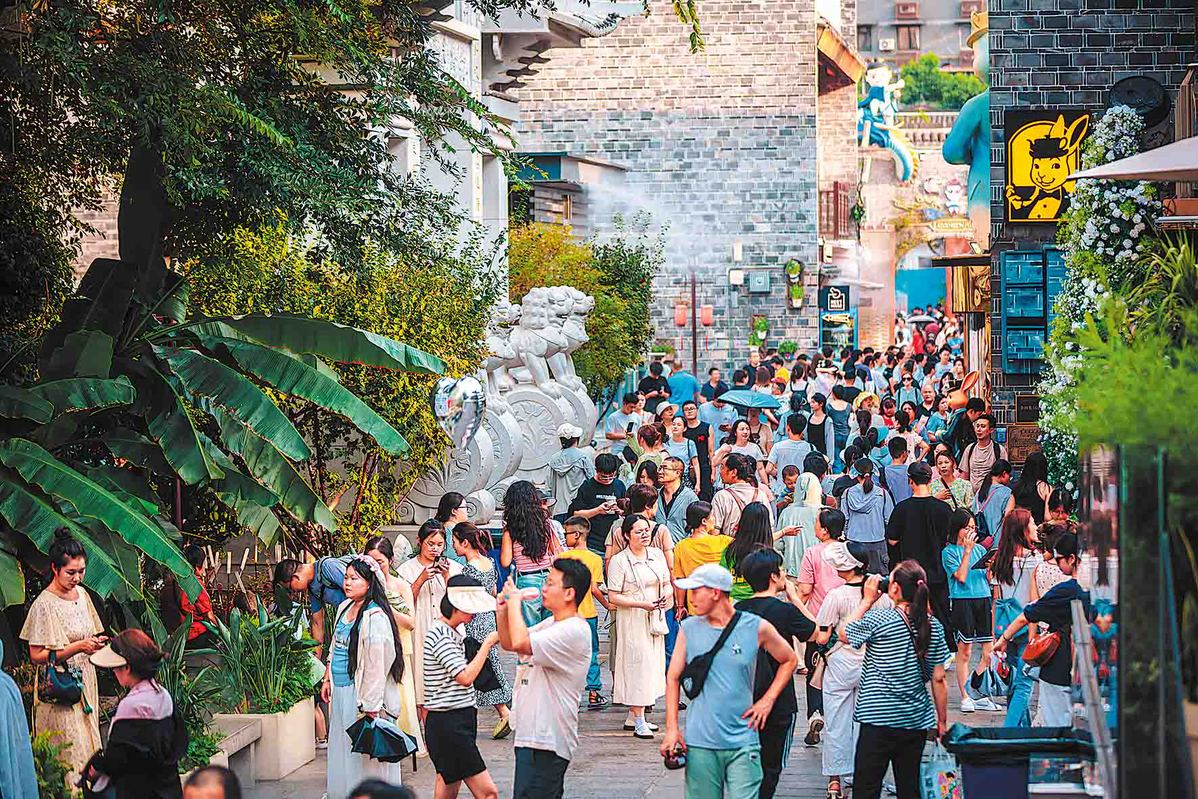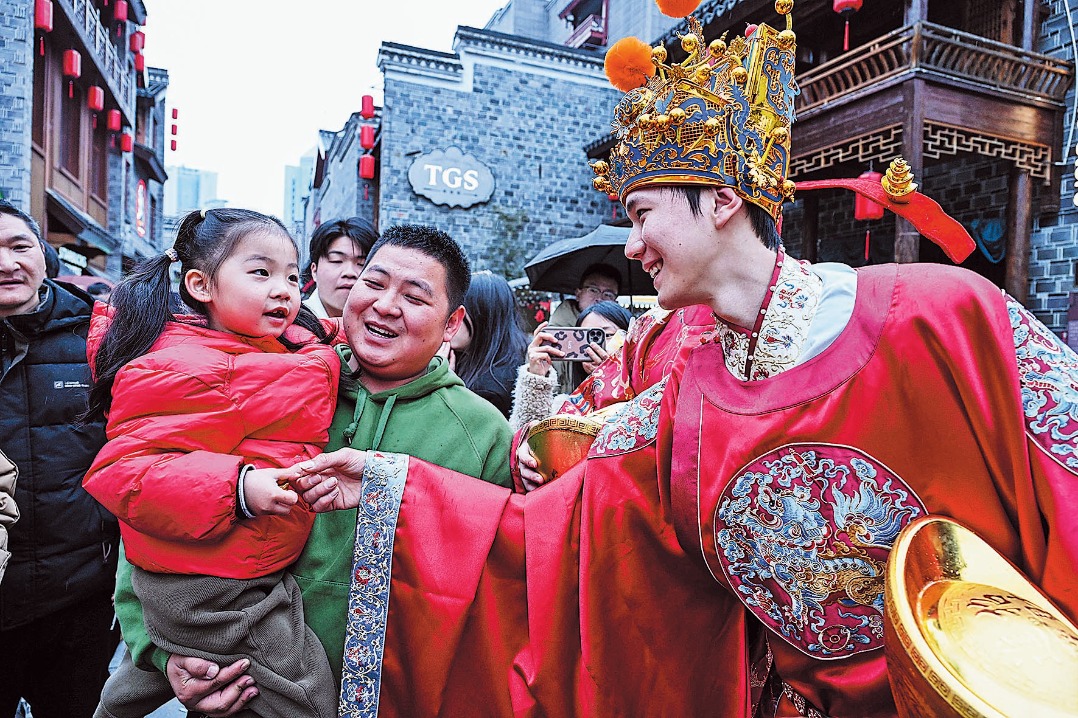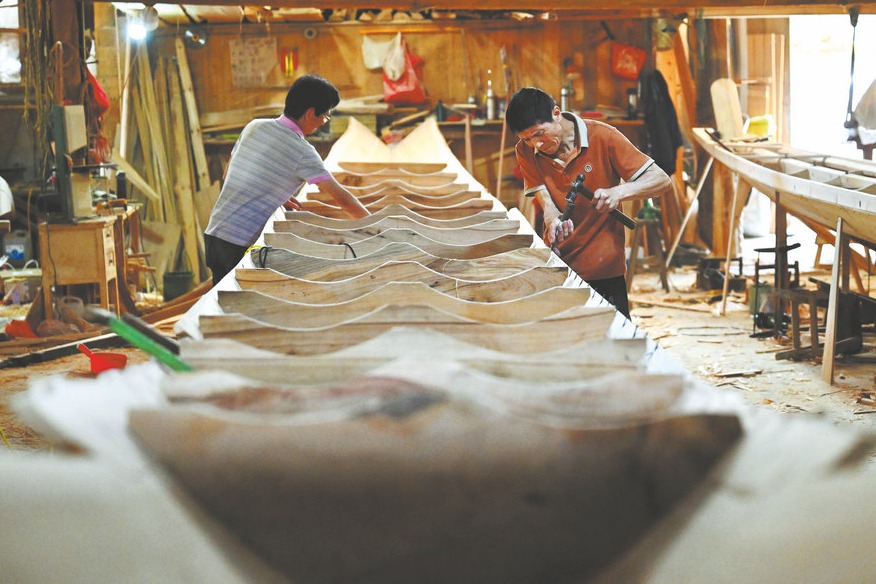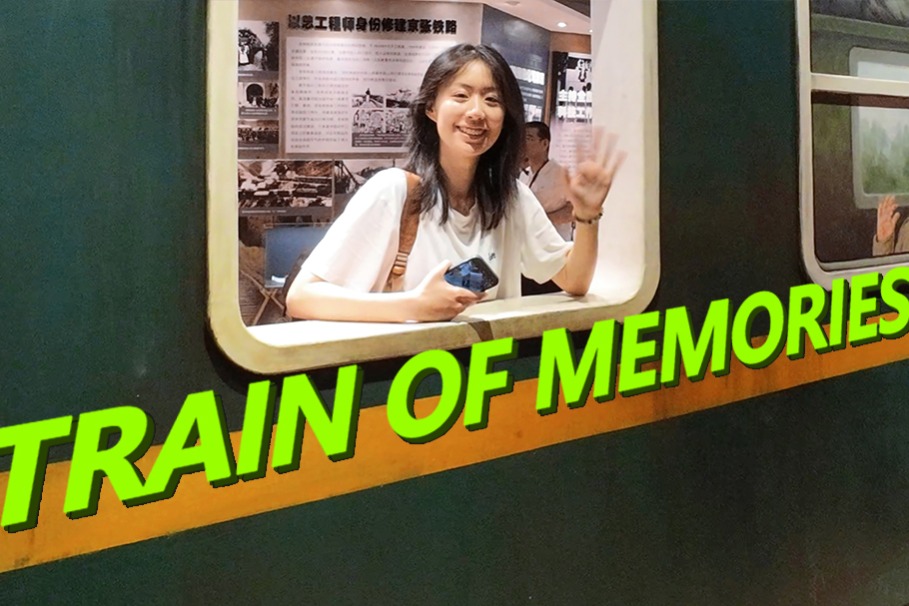Wanshou Palace rises from ruins to reclaim cultural, commercial status
Renovation and reconstruction project sheds light on fascinating history of Jiangxi guilds


Rekindling memories
Gu Lesi was born in Nanchang, and after nearly a decade away returned to her hometown for this year's Spring Festival. The changes in the Wanshou Palace area both shocked and delighted her.
"The old small shops and rundown shacks are gone, replaced by a brand-new historical and cultural block, with elements of intangible cultural heritage and popular spots for visitors to check out," Gu said.
As she squeezed through the crowd and slowly walked along the streets, she sampled a variety of snacks like sugar cakes, rice cakes, and porridge. "Everything seems to have changed, yet it also feels like nothing has changed," said Gu, 28, who moved to Zhejiang province a decade ago.
"You can still find the taste of those snacks from your past here. But the festive atmosphere of Spring Festival is something I've never experienced here before."
She said in the evening, there were dragon dance performances with lanterns, which reminded her of Yu Garden in Shanghai. Gu said the historical block is a perfect blend of the old and the new.
Yang Shen, the head of Xihu district in Nanchang, believes it is important to keep historical architectural and cultural elements while integrating them into a modern development.
The Wanshou Palace Historical and Cultural Block is not only a site for cultural experiences, but also a hub for commerce and tourism, as well as a venue for young entrepreneurs to use, he said.
"A historical and cultural block is a microcosm of a city. This transformation has significantly enhanced the image and quality of the provincial capital," he said.
The district has 123 buildings, with 118 reflecting the style of Jiangxi architecture in the late Qing Dynasty. The original "three streets, five alleys" layout has been preserved.
"We adhered to three principles: maintaining the neighborhood's organic structure, traditional architectural aesthetics, and cultural atmosphere," said Wu Tao, deputy district chief of Xihu district.























